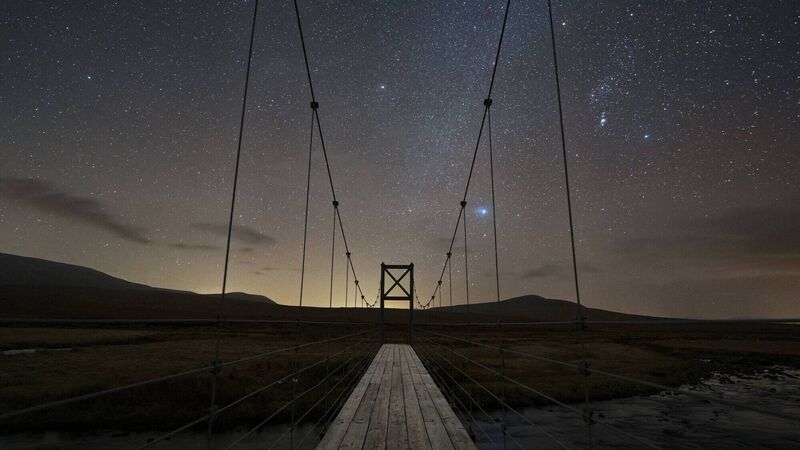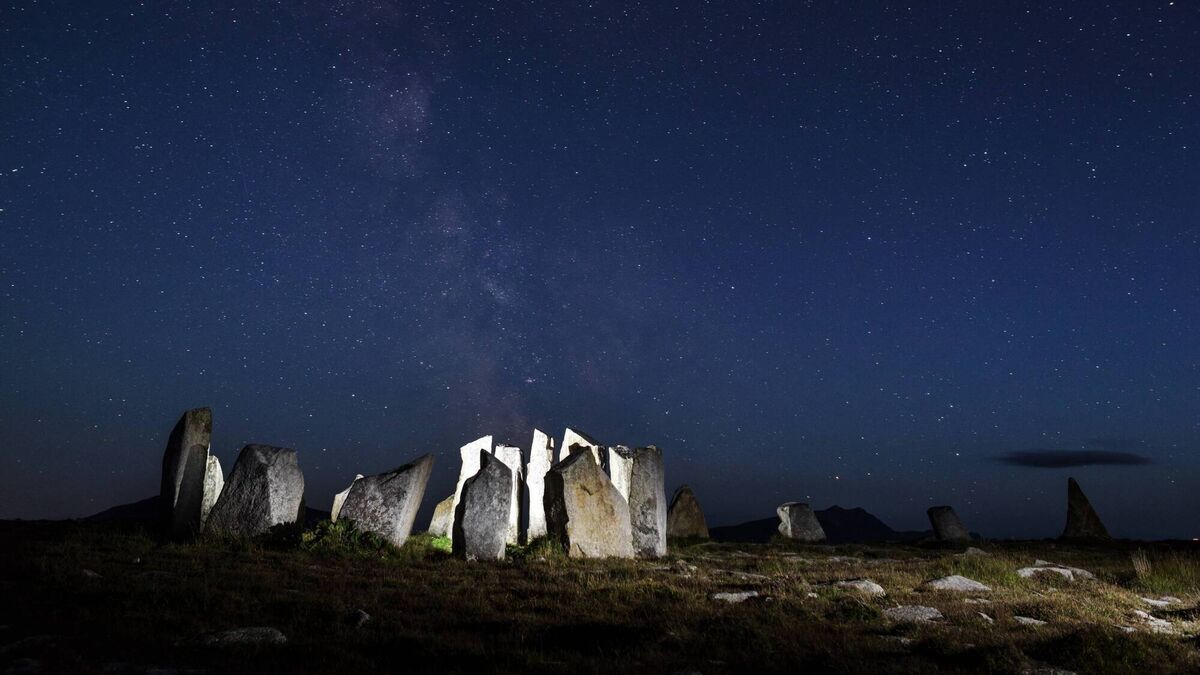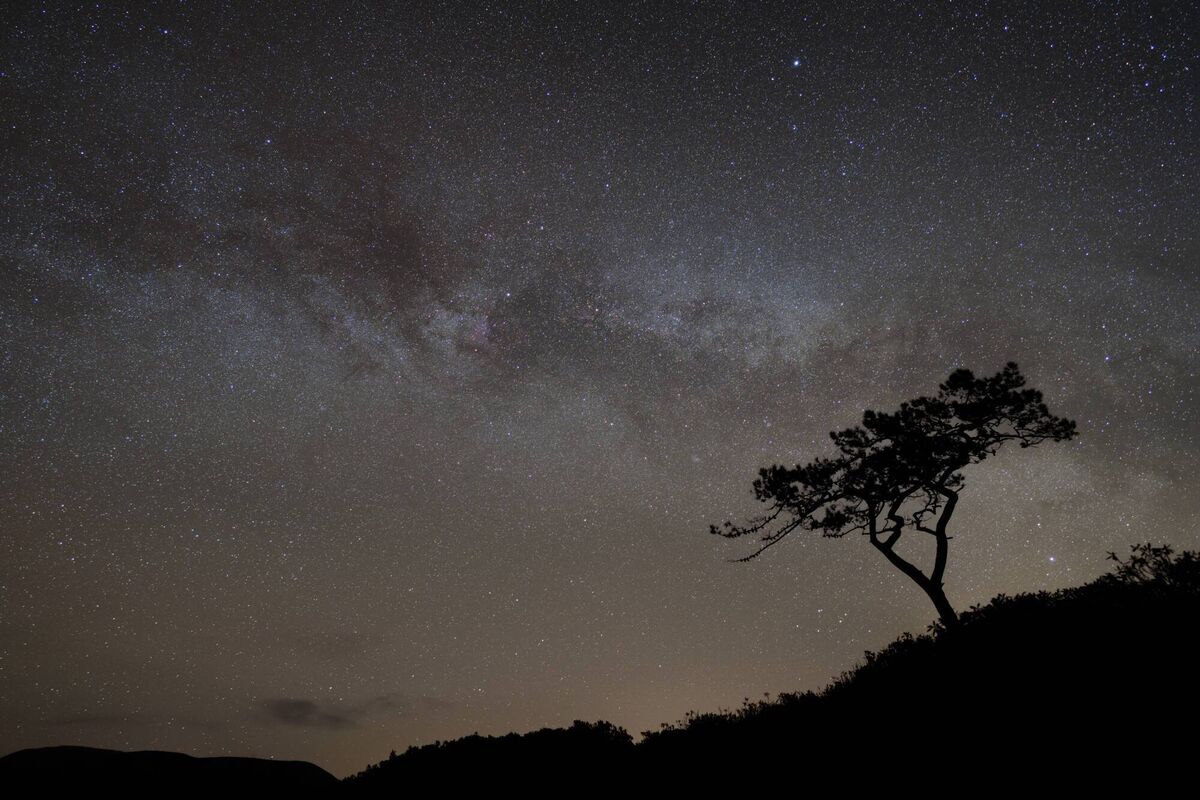Anja Murray: A lot more to see in the night skies when it's really dark

'Along Tarsaghaun Bridge', Wild Nephin National Park. Picture: Josh Matthews
Now that we are approaching the autumn equinox, which occurs on September 22 — when day and night are equal, and the northern hemisphere enters the darker half of the year — it’s a good time to pay attention to the wonder of night skies.
Throughout human history, night skies have been part of how we experience the natural world. Constellations of stars are at the core of many cultures’ creation myths and an intrinsic part of human’s worldview. Viewing the full splendour of the night sky, gazing up at the Milky Way on a clear night, is still one of the most awesome experiences available to us.

Yet most people can no longer see the Milky Way from where they live. The majority of the human population now live in areas where the night sky is no longer clearly visible due to sky brightening resulting from sources of artificial night-time light. In Ireland, as around the world, those living in urban areas experience nighttime as bright as near dusk light levels or in many places, even brighter than a full moon, all night long. Less than 5% of the land area of Ireland has near pristine nocturnal skies.
In natural conditions, roughly 6,000 individual stars are visible in the night sky over Ireland, including 50 different constellations that are visible with the unaided eye. However, about 20% of the population never gets to be fully dark adapted and only see a paltry 150 of the brightest stars, never really witnessing the wondrous spectacle of a natural night sky.

Because we have evolved with the rhythms of bright days and dark nights, our bodies adhere to a circadian rhythm, a sleep-wake pattern governed by the day-night cycle. When our eyes detect falling light levels, the pineal gland in our brain releases melatonin. Melatonin is a ‘darkness hormone’ which helps us to feel tired and ready for rest, assists with sound sleep, and stimulates white blood cells that support proper functioning of our immune system. When we are exposed to artificial light at night, our bodies produce less melatonin, which in turn can have a range of negative impacts on our health and wellbeing.
- We humans are not the only species to suffer negative impacts of artificial light at night, also known as ALAN. Recent investigations are revealing that hundreds of species of birds, mammals, insects, fish, reptiles and amphibians are suffering strong adverse impacts from exposure to ALAN, especially migratory birds and pollinating insects.
- For birds travelling from summer breeding grounds to wintering areas, bright lighting emanating from urban areas can act like beacon, drawing them away from migratory routes, often with lethal outcomes.
- Many scientists are now cautioning that ALAN is one of the most pressing threats to global biodiversity, especially as it makes many animals more vulnerable to other threats and less resilient to habitat loss or degradation.

A resurgence of appreciation for dark skies in now catching on, there are two dark skies reserves in Ireland. Kerry International Dark Sky Reserve around Ballinskelligs was the first recognised dark-sky place in Ireland and the first reserve in the northern hemisphere to be awarded Gold-tier status. To achieve this, the Kerry Dark Sky Group worked with Kerry County Council to replace all public street lighting with dark-sky friendly light fixtures and get the wider community on board too.
In 2016, a ‘Gold Tier’ standard of International Dark Sky Park was awarded to Mayo Dark Sky Park at Wild Nephin National Park. These two sites are now among some of the darkest sites in the world, attracting international attention and a boost to tourism.
But its not only remote places and national parks where protecting dark skies matter. Public lighting in both urban and rural areas accounts for the majority of ALAN. Solutions abound.

- Several cities in the USA, Germany, Japan, Belgium and Scotland have adopted an approach to reducing excessive ALAN.
- One of the main ways in which to achieve this is by ‘shielding’ public lighting, directing light to where it is needed, rather than poor design that allows light to spill out in to the sky above.
- Floodlights on sports pitches, for example, can be put on automatic timers, programmed to go off at a suitable time.
The colour spectrum of light also impacts how much light scatters. White, blue, violet and ultraviolet wavelengths are especially disruptive to our circadian rhythm, our capacity for night vision and to wildlife who need darkness. Lights that are closer to the red end of the spectrum do not scatter as much. LED lighting, which is more more energy efficient than older technologies, tends to emit more short-wavelength (i.e., blue) light, making the sky glow from city lighting even more pronounced, although with careful planning this too can be managed to protect night skies.
- Planning authorities, including local authorities, can lead with planning guidance around minimising ALAN. Greater awareness around the harm of excessive outdoor lighting at night will help, and knowledge about how lighting design determines how much light spills out and up from the target area.

- The ‘dark sky movement’ is a global effort to preserve and protect dark skies where they currently exist. They work with communities, governments, and professionals to prioritise quality outdoor lighting that reduces light pollution; run educational events and conferences; and certify and help conserve starry sky parks, communities, and other places around the world.
Mayo Dark Sky Festival (November 1-3) does an impressive job of bringing together astronomy, heritage and the environment in the beautiful setting of Mulranny in County Mayo, near to the Mayo Dark Sky Park. Events such as this are key to growing awareness of the harm caused by light pollution and the range of solutions to help preserve night skies.








